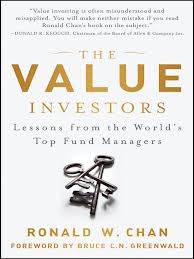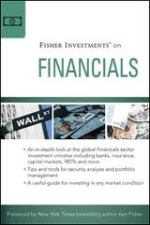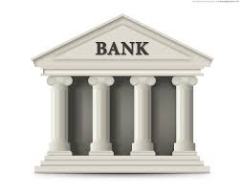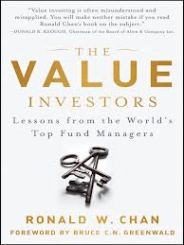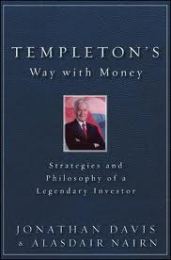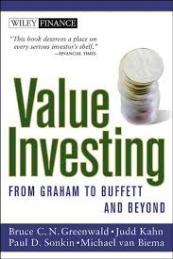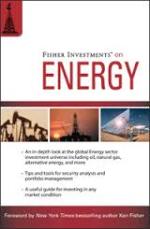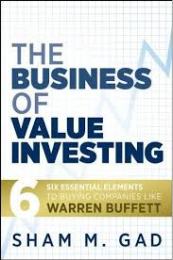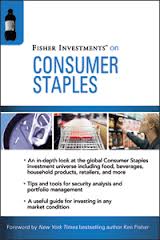Health-Care investing: Profiting from the new world of pharma, biotech and health care services
Author: Les Funtleyder
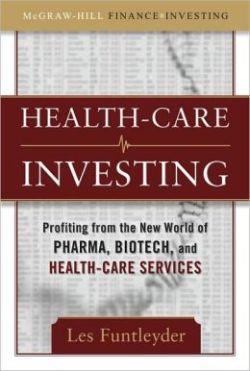
Introduction
– health care demand is relatively inelastic
– diverse range of businesses in health care (pharmaceutical, biotechnology, hospitals and many more)
– highly regulated industry
– bewildering number and complexity of payment systems and reimbursement
– constant room for improvement due to existence of new health problems
– dependent on innovation
– an inefficient industry with large variations in terms of cost and business process
– faces high cost of technological advancement
Problems in health care industry:
– Strong presence of asymmetry of information and agency problem in health care industry causes inefficiencies, other causes include poor patient decision making, misaligned incentives, limited clinical knowledge, cultural bias
– In health care industry, asymmetry of info gives supplier power over customers >> control over pricing
– No standard price data hence unable to compare prices for certain treatment
-Difficulty in measuring quality in health care service, very subjective issue
– Slow to apply quality control unlike other industry
Anatomy of health care system
Breakdown into 5 main players:
1. Patients
2. Payers
3. Politicians
4. Product makers
5. Providers
Shareholder value can be created via interactions and power shifts btw these 5 players
1. Patients
– often have little choice on whether to obtain a service or product (Inelastic dd) and little info about providers and potential outcomes of treatment
– Objective: recover and stay healthy, incur as little cost as possible
– demand greater access to info and control over decisions
>> given the increased in level of info available via the internet and other forms of channel, patients can seek alternative treatments
>> successful health care company should deliver care that can create value or provide services that can prevent or reduce the occurrence of secondary illness or are patient-focused
>> demographics of patient.. Aging population in developed nations >> rise in demand
>> got to understand the demand and requirement of patients as it changes constantly
>> influence of media on educating public about health related issues
2. Payers
Defn: entities that are responsible for paying cost of care .. E.g. Govt, employers benefit for staff, organization, union, individuals
Objective: minimize cost via limiting treatment options, pay provider lesser or pass cost to patient
– ensure they are getting value from their expenditure.. For eg staff medical benefits helps to attract employee
– more control payers have, easier for company to deliver value to shareholder
3. The politicians
Objective: execute entitlement plans, safety nets, ensure medical product are safe
> dual role: payer and regulator
> they are usually the price setter.. Balance btw the needs of patients (price set as low as possible) and provider (price set as high as possible)
> companies that can navigate both the reimbursement and regulatory areas will have competitive advantage
> government is a source of risk for company as their action can affect company’s earnings
4. Product makers
– pharmaceuticals, medical devices, biotechnology
– objective: max profit, to develop and get products onto market ASAP without barriers
> constant struggle with government over price setting, distribution of products , advertising… etc
> innovation is key, creating treatments for disease states that have not existed before to assuage concerns raised about prices of therapies
5. Providers
– physicians, hospitals and facilities
– objective: wants control over how care is delivered
– conflict with regulators over guidelines and procedures, mandates they have to pay such as use of IT and staffing
> providers have more info than patients..(doctor and patient relationship) They have the control in deciding the demand for products and services. Providers have the final say in treatment. Products that are tailored to helping providers meet guidelines or help improve productivity will be successful.
Investing in healthcare:
Characteristics of healthcare:
– presence of continuous large scale reform efforts
– faces large impact from government as they play both a payer and regulator
– industry is built upon innovation.. Development of advanced medical products to get an edge.. However investors have to be sceptical about the success of such products especially during early stages of developments… Products that work in theory may not work in practice
– catalyst or events that may affect health care industry: data from clinical trails, reimbursement decisions by government
– strong barriers to entry due to regulatory hurdles, limited availability of substitute, capital intensive
– highly interconnected and dependency between each subsections in the health care industry>> may pose a risk
– non cyclical.. Not dependent on economy … Not dependent on commodities pricing
What makes a good health care company?
> competitive advantage
> high return on investment
> good R&D
> ability to improve quality, cost and access to care
> ample present and future demand
> ability to exploit new opportunities
> good management
> conservatism approach to accounting and expectations
> corporate governance that lead to place more emphasize on shareholder … Due to presence of principal and agent problem
> company’s financial performance
> patient referral patterns is an important factor… Understand how patients access their products or services and who drives the patient flow. Most of the time it’s driven by third parties like physicians who refers the patient to the care
> wide variations in practice patterns and health care demand patterns across different geographic areas
> heavy compliance to follow.. High Compliance costs
> companies that can match sites of care like hospitals and retail based clinics with products delivered most successfully are more likely to add to shareholder value
> consistent ability to achieve returns on their R&D investments… Environment that encourage research, no penalties for failure, proficient in allocating resources to successful programs and kill failures early in the process … Good track record of success with organic new product development
Health care specific risk
1. Development of clinical projects has a high failure risk
2. Intense regulatory scrutiny.. Failure to receive approval for certain medical products or services
3. Market risk.. Demand for particular product may not be in the hands of the patients but the intermediaries like physician
4. Obsolescence risk for products.. Surpassed by superior products
5. Intellectual property risk… Risk of innovative product being duplicated… Free riding
Fundamental analysis for health care
1. Idea generation:
– ways to determine whether a company is worth investigating
> beneficiaries of health care reform, major changes in business of a company, a sharp rise or fall in share price
2. Financial statement analysis
– focus on management view on company w.r.t current operating environment, it’s strategy for dealing problems, interaction with government agencies,
– focus on earnings, R&D investments.. Costs management
3. Forecasting
– forecast the timing and magnitude of reimbursement rates changes, effect of reform, regulatory actions
– multiples, present value models
– private market valuation >> this method is one that health care investors should focus on
-time frame
Long term investing due to R&D cycle, implementation of reform, business evolution
Investing in pharmaceuticals
Definition: producers of drugs or medicines that are dispensed and used in medical treatment
Large pharmaceutical companies
> multiple products, significant spending on R&D, sizable workforce and sales force
Key drivers:
Innovation
– drug development is expensive process, time consuming (8-10 years) & high risk due to small success probability (1 out of 1000 drugs make it from discovery to clinical trials)
– continuous development to stay competitive
– there is not a linear relationship btw R&D output and amount of capital deployed… Depends on “eureka” moments
– inability to innovate can be due to: failure of management to understand the science, conformism among scientist and mangers, lack of leadership, focus on blockbuster drugs, poor resource allocation (continuing to fund failures while ignoring successes)
– failure of drugs could be due to: safety, efficacy, toxicology, formulation, commercial factors, failure to prove it’s better than other similar drugs
– measuring success of company ability to innovate based on past track records, whether it has a continuous stream of new creations
– determining as early as possible which compounds have the best potential to be successful and which will not is crucial, however management will continue to fund failures because it has already poured in substantial amount of capital into it
– target selection > what to conduct early-stage research on is vital
– ability to deal with regulators on issue such as timeline, safety and requirements is important
– factors affecting sales of drugs: size of drug class, type of payer that dominates in the region and it’s reimbursement requirements, formulating tiering, clinical guidelines, clinical practice, clinical practice, stage of life cycle, proportion or share of new prescriptions relative to existing prescription, type of physician that prescribe the drug, site of care at which it is prescribed
– patent expiration risk
– merger and acquisition is common especially large firms acquiring smaller ones… Have to assess if it’s value adding
Generic manufacturers:
– generic medicine are equivalent to branded drugs just tt they are not marketed under any brand
– companies manufacture genetic drugs enjoy cost advantage but have to face regulation
Small market cap pharmaceuticals
– they normally will specialize in a particular niche
– key driver is innovation as well however given their smaller resources, will face problem in R&D … Have to rely on capital market or partnership with larger entities
– risk: patent expiration, over reliance on key products, reliance on external forces
Opportunities in pharmaceuticals:
1. Large molecule product
2. Pharmacogenomics
3. New technology lead to invention of new vaccines
4. Population and wealth growth in developing countries
Investing in Biotechnology:
>> focus on deriving compounds from living cells rather than from chemicals… They deal with large molecules instead of small ones
>> high expense and complexity.. Hence focus on high value areas like oncology tt produce high margins
>> complexity in process means it’s hard to mass produce and scale up production in short period of time
>> subjected to regulations
>> certain factors to take note include presence of star scientist, number of patents granted, number of patent citation, quality of company science, capital raising environment since it’s a capital intensive business, important to find source of funding , shape of adoption curve more important than peak sales
>> a good clinical trial programme can determine the success or failure of a product
>> beware of fad
Investing in health care services
Hospital:
>> Hospital pricing is confusing, with different pricing levels often being determined by payer or patient type
>> Geography plays a role in hospital operations, area with a growing population that is well insured will ensure good financial performance
>> Competition from other hospitals and non-profit hospitals
>> Quality services and customer satisfaction is vital
>> Movement towards outpatient care and shorter inpatient stay to increase productivity
INVESTING IN MEDICAL TECHNOLOGY:
>> Good visibility of revenue relative to that of other industries especially for implantable products.
>> Companies that can show the benefits of their technology for controlling costs, improving quality, or expanding access to medical care will be able to overcome the most onerous provisions.
>> Companies can choose to sell them directly or via distributors. Target customer could include individuals to large institutions.
>> Medical technology requires small sales forces hence it has lower operating costs and better margins. Analyst need to consider sales force efficacy and sales cycle.
>> Consider adoption curve of technology. Factors affecting the curve include incidence of disease, severity of disease, novelty of the product, cost of the product, type of physicians who administer the procedure, the learning curve associated with using the technology
>> Innovation is key. Take note of technologies that can lower cost, make clinical procedure faster and outcome better.
>> Intellectual property issue
>> Cannibalization risk… The risk that new products will steal shares from older products. To counter such risk is to have a continuous stream of product to offer.
>> Operator risk… Risk that when a product is taken out of clinical trials and placed in a ‘real world’ environment, performance of product may decline

